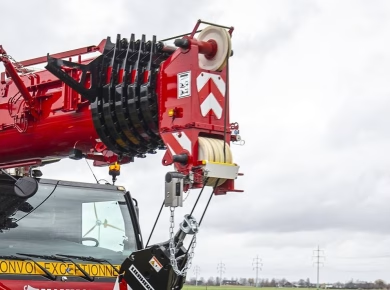Every day on the job site, I see the same scenario play out: a tool slips from a worker’s grasp, clattering to the ground, creating a moment of panic as everyone instinctively ducks. It’s a reminder of how easily the smallest oversight can lead to significant safety risks. While we often focus on hard hats and steel-toed boots, one piece of equipment that often gets overlooked is the tool lanyard. It’s a simple, yet incredibly effective safety accessory that can prevent accidents, protect both people and property, and truly enhance our overall safety culture on site.
The Overlooked Importance of Tool Lanyards
Tool lanyards are often dismissed as unnecessary or even cumbersome, but in my experience, they’re a crucial element of any safety protocol. Imagine a site where tools are securely tethered to workers at all times. Not only does this prevent tools from falling and causing injury, but it also helps to keep the site organized and efficient. A dropped tool can lead to lost time as workers scramble to retrieve it, not to mention the potential for damaged equipment or worse, injury to nearby personnel.
Understanding the Risks
The statistics speak for themselves. According to the Occupational Safety and Health Administration (OSHA), falls and dropping tools account for a significant portion of workplace injuries in construction and other industries. In fast-paced environments, the risk increases exponentially. A tool lanyard mitigates this risk, offering a simple solution to prevent accidents before they happen. By keeping tools secure, we not only protect our crew but also uphold the integrity of our work environment.
Choosing the Right Tool Lanyard
Not all tool lanyards are created equal, and selecting the right one for your specific needs is crucial. There are various options on the market, from elastic lanyards that allow for flexibility and movement to more robust models designed for heavier tools. When I first began using lanyards on-site, I made the mistake of choosing based solely on price. This decision led to a few regrettable moments when tools slipped free during use. Investing in high-quality lanyards made a world of difference in both safety and productivity.
Key Features to Look For
When selecting tool lanyards, consider the following features:
– **Weight Capacity**: Ensure the lanyard can handle the weight of your tools without risk of breaking.
– **Length and Flexibility**: A lanyard that is too short can be restrictive, while one that is too long may lead to tangling or snagging. Look for adjustable options.
– **Attachment Mechanism**: Different tools require different attachment methods. Whether you’re using a carabiner or a loop, make sure it securely fastens to the tool and your harness or belt.
– **Durability**: Check the materials used in the lanyard’s construction. It should withstand the wear and tear of daily use in harsh environments.
Integrating Tool Lanyards into Safety Protocols
Introducing tool lanyards into your safety protocols requires more than just handing them out. It’s essential to educate your team on their correct use and reinforce their importance. During safety meetings, I often share personal experiences and statistics to highlight the risks of neglecting tool security. Engaging team members in discussions about best practices not only fosters a culture of safety but also encourages personal accountability.
Training and Best Practices
To maximize the effectiveness of tool lanyards, consider implementing the following training practices:
– **Demonstration**: Show how to properly attach tools to lanyards and secure them to belts or harnesses.
– **Routine Checks**: Regularly inspect lanyards for wear and tear to ensure they remain in good condition. Encourage workers to report any damage immediately.
– **Incorporate into Daily Routine**: Make the use of tool lanyards a part of your daily checklist. Just as workers check their hard hats and gloves, tool lanyards should be a standard part of their gear.
Real-World Applications and Success Stories
On one particular project, we had a new crew member who was skeptical about using tool lanyards. He believed they would slow him down or get in the way. After a couple of days on-site, he experienced a near-miss when a heavy drill nearly fell from his grasp. That moment changed his perspective entirely. He began using a lanyard diligently, and soon after, he shared his newfound appreciation with other team members. This kind of peer influence can be incredibly powerful in creating a safety-first mindset across the board.
Encouraging a Culture of Safety
When safety becomes part of the daily conversation, it transforms the work environment. As teams share their experiences—both positive and negative—regarding tool lanyards, it fosters a culture where everyone looks out for one another. It’s about building trust and accountability, ensuring that everyone understands their role in maintaining a safe job site.
Conclusion: Embracing a Safer Future
Tool lanyards may seem like a minor detail in the grand scheme of safety gear, but their impact is far-reaching. By integrating these simple yet effective devices into your safety protocols, you can reduce risks, enhance productivity, and foster a culture of safety that resonates throughout your team. As professionals in the construction, health and safety, and site management fields, it’s our responsibility to lead by example and make safety a priority. Adopting tool lanyards is just one way we can safeguard our crews and ensure that everyone returns home safe at the end of the day.



